Everyone likes to work in a great company culture. This video describes five key attributes of a great culture based on approximately 6,000 interview responses.
…continue reading >
Changes in CMMI V3
Introduction (Updated 8/18/24) See Neil’s related video on YouTube The main communication points from ISACA (the custodian of the CMMI) are: A new model architecture to reduce the time and resources it takes to make updates New Practice Areas (PA) covering safety, security, data management, staff development, and virtual delivery The main changes in Version …continue reading >
How to Pass a CMMI Appraisal
This video describes how to pass a CMMI (Capability Maturity Model) Benchmark appraisal, and what is involved.
…continue reading >
Avoiding a Project Death March
A death march is when project staff members believe the project is destined for failure, or that it requires a stretch of unsustainable effort to achieve any success. This video will summarize the common causes of death marches and a simple negotiation approach to address the concerns of customers and managers.
…continue reading >
Simplifying Software Project Documentation
In this video, I will describe how to reduce the volume of project documentation in any project.
…continue reading >
Improve Your Team’s Efficiency With Tools & Flows
In this video I will provide examples of how project teams manage their project data in various tools.
…continue reading >
How Good Are Your Project Management and Engineering Practices? Score yourself out of 27! (part 2)
In this video, I will share the second part of 27 practices that can help a project team become world class with respect to quality, schedule and cost. Look at the list and score where you think your team is using the sheet linked in the YouTube video description.
…continue reading >
How Good Are Your Project Management and Engineering Practices? Score yourself out of 27! (part 1)
In this video, I will share the first part of 27 practices that can help a project team become world class with respect to quality, schedule and cost. Look at the list and score where you think your team is using the sheet linked in the YouTube video description.
…continue reading >
Really Bad CMMI Interpretations to Avoid
In this video, I will discuss five CMMI interpretation issues I have seen over the years and some suggestions for fixes.
…continue reading >
10 Mistakes That Can Kill Agile Software Development (part 2)
Agile teams often start strong after their initial Agile training, but unless they are very careful, small breakages can occur over time. In this video I will review five additional breakages to look out for. Subscribe to the YouTube channel for future videos.
…continue reading >
10 Mistakes That Can Kill Agile Software Development (part 1)
Agile teams often start strong after their initial Agile training, but unless they are very careful, small breakages can occur over time. In this video I will review the first 5 of 10 breakages to look out for. Subscribe to the YouTube channel for part two.
…continue reading >
Adopting Frameworks and Standards — 6 Best Practices
In this video, I will discuss how to efficiently adopt standards such as Agile, CMMI, SAFe and ISO, and how to fit them in with your existing workflow.
…continue reading >
A Tool That Monitors Your Project’s Performance in a Different Way
Does this scenario sound familiar? A project manager tells senior management that his or her project is on track for delivery. The week before the delivery deadline, senior management is told the project needs an additional six months, and that twelve months would be useful. The obvious question is, “Did anyone know earlier that the …continue reading >
Agile Estimation: Story Points, Effort, and Schedule
In this video, I will discuss Agile estimation and key points to look out for. Please subscribe, like, and add a question or nice comment! Please forward to anyone you think might benefit from it.
…continue reading >
Better Agile User Stories and Backlogs – 6 Steps
In this video, I will describe 6 steps that can be used to improve an Agile backlog. Please subscribe, like, and add a question or nice comment! Please forward to anyone you think might benefit from it.
…continue reading >
Which Agile Process to Use?
In this video, I will summarize some popular versions of Agile, and which ones to consider for large scale projects. Please subscribe, like, and add a question or nice comment! Please forward to anyone you think might benefit from it.
…continue reading >
How to Define Done in Agile
In this video, I will discuss actions that agile teams can take to define “done” for an agile project. Please subscribe, like, and add a question or nice comment! Please forward to anyone you think might benefit from it.
…continue reading >
Remote Team Collaboration
In this video, I will discuss 8 actions that remote teams can take to help with collaboration and coordination. Please subscribe, like, and add a question or nice comment! Please forward to anyone you think might benefit from it.
…continue reading >
Implementing Kanban and Agile Together
In this video, I will discuss what Kanban is, how to implement Kanban and Agile together, and when you might decide change some of the typical agile practices. Please subscribe, like, and add a question or nice comment! Please forward to anyone you think might benefit from it.
…continue reading >
Avoiding Surprises in Agile Using Risk Management
This video series is about going beyond the basics of agile software development. In this video, I will discuss how to avoid surprises in agile using risk management.
…continue reading >
Integrating PMBOK, ISO 9001, CMMI and Agile/Scrum
This video series is about going beyond the basics of agile software development. In this video, I will discuss how to adopt various standards and frameworks, such as ISO 9001, the PMI body of knowledge, and the Capability Maturity Model, while using Agile.
Resolving Role Confusion (in Agile)
In this video, I will discuss problems that can occur when roles are defined in an agile team, such as scrum master, manager, project manager, or product owner, system engineer and business analyst. Please subscribe, like, and add a question or nice comment! Please forward to anyone you think might benefit from it.
…continue reading >
Things to Improve Your Agile Implementation Immediately
In this video, I will discuss five key improvements that an agile team can implement to get more out of agile. Please subscribe, like, and add a question or nice comment! Please forward to anyone you think might benefit from it.
…continue reading >
Bugs & Defects — Cleaning Up Stuff
In this video, I will discuss the problem of an agile team having lots of bugs and defects in its work, and what can be done to find and avoid them. Please subscribe, like, and add a question or nice comment! Please forward to anyone you think might benefit from it.
…continue reading >
10 Steps to Coordinate Remote Teams
Introduction Team coordination has always been important, but it is particularly important when all team members are remote. Here are 10 things to consider when coordinating work among many remote team members: 1. Define clear and useful goals People work best when they have a goal to aim at. Goals come in a variety of …continue reading >
Overcommitment — Common Causes & Possible Solutions
In this video, I will discuss the problem of agile teams becoming overcommitted, or in other words, being committed to more work than they can do. Please subscribe, like, and add a question or nice comment! Please forward to anyone you think might benefit from it.
…continue reading >
Problems You Can Solve — Really!
Introduction Take a look at these typical project problems and select which ones are relevant for your organization. Many organizations don’t have these problems, so we know they can be solved. Two considerations How much time or money in your group is lost each month due to these problems? Imagine a life that doesn’t have …continue reading >
Succeeding at Agile: Agile Intent & Being “Agile”
This video series is about going beyond the basics of agile software development. In this video, I will discuss two aspects of how organizations succeed at Agile, Agile intent, and actually being agile. Please subscribe for more videos. …continue reading >
Compliance vs. Intent – Are You Getting the Most Out of What You Are Doing?
Introduction After observing the software development IT world since 1985, I have noticed that people fall into four general categories with respect to new improvement initiatives, such as Agile, PMI, CMMI, SAFe, Lean, Six Sigma, etc. Ignore — it’s just a fad Implement poorly on purpose to prove a point — “I’ll show them” Enthusiastically …continue reading >
Are You Agile and Scared to Change?
Introduction This is the most amazing thing: Many teams that use Agile practices have been told by their Agile coach that if they change, they won’t be Agile anymore. So, they don’t change, and their overcommitment, quality and deadline problems persist. This article is a quick summary of what it means to be Agile, and …continue reading >
Do You Know For Sure That Your Customer Received the Correct Files?
Have you ever sent or received a file or software release that looked correct but in fact turned out to be the wrong stuff? This can happen when authors and developers hand off files to test or QA, or when QA hands off files to the customer. Somewhere along the line either the wrong files …continue reading >
Running Your Business Using a Consistent Process and Maintaining the Gains
Introduction When you purchase a product or service, you want it to work as expected. You don’t ask the vendor for a product made by Jane’s team, or tell them specifically you don’t want one where John’s team was involved! To further illustrate, when you buy a latte, get your shirts cleaned, or purchase a …continue reading >
Go on a Documentation Diet
Introduction Most documents, such as project plans, requirements, and designs, contain long narrative paragraphs that make them time-consuming to write, tedious to read, and hard to find essential information. Instead, consider banning paragraphs from your technical documents and use tables with single sentences. To illustrate the point, here are some narrative and non-narrative examples. Project …continue reading >
Complying with Standards Such as ISO9001, CMMI or AS9100
Introduction Many software, hardware, and systems development companies have customers that expect them to be certified or appraised to standards such as ISO9001, CMMI, Automotive Spice, PMBOK and AS9100. There are several common reactions to this request: Use the standard as an opportunity to improve performance. Identify the smallest possible application of the standard so …continue reading >
Ready to Ship? Analyzing Peer Review and Test Data
Introduction Your project has been going on for eight months, and each milestone has been met so far. Final test has not occurred yet, but you feel that the product will be ready. Quick Test Before each statement below, ask the question, “Am I on track to deliver by the final deadline?” Fact 1. The …continue reading >
10 Tested Leadership Practices
I have met some great leaders over the last thirty years. Here are 10 things I see them do: Set achievable deadlines with input from their staff. Anything else will destroy people’s motivation. Routinely communicate goals. People appreciate knowing the bigger picture of what they are working on. Ensure staff members are trained in the domain …continue reading >
Tools to Consider
Introduction Tools can help teams perform faster if they are set up correctly and contain good data. Here is a list of some tools that my clients are using. The list is by no means a complete list of all tools, but it might cause you to investigate tools that you have not heard of …continue reading >
Improving Capability and Performance With CMMI V2.0 — What Has Changed?
Introduction (Updated 11/4/19) In March 2018, a new version of the Capability Maturity Model Integration (CMMI) and appraisal method were released. This article summarizes the changes and upcoming milestones. The overall focus in V2.0 has been to drive home the point that the model is about improving organizational capability to improve performance for any type …continue reading >
Overcommitment and Negotiation — One Choice Only?
Introduction Overcommitment (promising more than one can do) is common in every industry. Overcommitment can be positive and cause people to stretch and grow. It can also lead to embarrassment, disaster and financial loss. Given that there is a range of outcomes, great project teams are very careful when making commitments. There are many reasons …continue reading >
Improving Hardware Engineering Practices Using CMMI
What is CMMI? CMMI is a collection of best practices used by software, hardware, IT development, and service organizations to improve their cost, schedule and quality results. It is organized into a roadmap that can be implemented incrementally over time. Useful links CMMI for Development Summary CMMI for Services Summary Changes from CMMI V1.3 to …continue reading >
Why Do People Use CMMI and What Do They Get From It?
Introduction CMMI (Capability Maturity Model Integration) has been around for 32+ years and is a proven collection of engineering, management, service and improvement practices. The two primary models that organizations use are: Development (CMMI-DEV) Services (CMMI-SVC) The DEV model is used for development of systems, products, IT solutions and software. It has a worldwide adoption …continue reading >
Kanban — What It is and Using It with Agile or CMMI
Introduction Kanban (“signboard” or “billboard” in Japanese) is an inventory-control system to control the supply chain. It was made popular by Toyota in 1953*. In Kanban, a signal is sent to produce and deliver a new shipment of material as it is consumed. These signals are tracked through the replenishment cycle and bring visibility to …continue reading >
What is the Difference When People Change?
Introduction Since 1989 Mary and I have been performing the role of change agent. This involves teaching or coaching new skills, such as estimation, risk management, defect identification, agile, CMMI practices, or fixing organizational problems so that work can be done quicker with fewer problems. There is one common difference between the teams and organizations …continue reading >
Using the Best of Scrum, SAFe and CMMI
Introduction The software, systems and IT development communities are constantly looking for approaches to organize and manage their work. Over the years there have been many solutions to choose from. These include the Project Management Body of Knowledge from the Project Management Institute (PMI), the Capability Maturity Model (CMMI), Integrated Product Development, Concurrent Engineering, and …continue reading >
Get Your New Project onto a Sound Footing
Introduction Does your new project team have the following challenges? A deadline and expectations with no reliable estimates or task breakdown Few or no requirements No repeatable life cycle to manage work now and in the future Bugs and rework from previous projects consuming resources If some of these resonate, here are five steps that …continue reading >
Defining “Done”
Introduction A common definition for work done is, “I am sure this will be OK,” and “The deadline is up.” If a team applies one of these definitions to requirements, test plans or code, then defects slip downstream, causing rework, extra test cycles, costs and upset customers. Here is an alternative definition for “done”: The …continue reading >
Improve Your Team’s Efficiency with Tools & Flows
Introduction Can you find the information you need when performing project work? When you do find it, is it the correct version and of reliable quality? Projects run faster when they simplify the information they generate, use a process to reduce errors, and store the information in a single place for quick access. Over the …continue reading >
We Are Agile and It’s Chaos — Now What?
Introduction Organizations move to Agile (Scrum) to get early customer feedback and deliver features incrementally. They also become Agile because it sounds more appealing than the alternative! Either way, from my recent informal audience poll of 450 people, two-thirds are not happy with their Agile implementation and experience chronic chaos or quality problems. What is going …continue reading >
Speed Up!
Introduction You have noticed that some project work seems to drag on forever. When things don’t go as quickly as you want, stop and identify some of the underlying causes. Consider the following categories and questions. Skills Are your team members skilled? For example, eliciting and writing software requirements can take ten times longer when …continue reading >
Engaging Management
Introduction A common question we get asked is how team members and project managers can engage their senior management in improving the state of the organization. At the project level, there are chronic challenges regarding schedules, rework, changes in priorities, and death-by-chaos. The management team has its own issues regarding resources, sales, deadlines and new …continue reading >
What is the Success Potential of Your Projects?
Introduction The Standish Group releases a periodic Chaos report that summarizes typical IT and software development project success and failure rates in industry. Within the (very expensive) report is a table of success factors that have been gleaned from numerous surveys and interviews of IT managers during the previous period. In summary, 29 percent of …continue reading >
Communicating Risk to Get Your Bosses’ Attention
Introduction One of the simplest and most effective practices to reduce project problems is risk management. However, even when teams perform risk management, getting anyone to pay attention to the risk list can be a challenge. Communicating risk Here is an approach that can help you write risks in a format that can be communicated with …continue reading >
Developing Critical Systems — Is Testing Enough?
Introduction Software is everywhere. A lot of it works well all day long. Some of it is terrible. Some of it can kill you. This article is about critical software, the stuff that really needs to work, and that can have significant consequences if it doesn’t. There are three trends I have noticed in software …continue reading >
Management, Project Management, and Scrum Master Roles — Who Does What?
Introduction Wow! The lesson I have learned is not to read literature any more. A literature search on “Management, Project Management, and Scrum Master Roles” will make you dizzy, nauseous, and state every possible opinion as the correct one! The bottom line is that the word “manage” has been around for hundreds of years. When …continue reading >
Leading Agile Organizations — Young or Adult Characteristics?
Introduction There are lots of Agile teams out there in the world. Some are having a great time with great results. Many have come to rely on brute force and long hours. In these organizations, not even the Agile practices (e.g., backlog, estimation, planning, “done”) are followed — it’s more like code, ship, and hope. However, …continue reading >
Six Immediately Usable Requirements Tips
Introduction Across the software development industry, the goal that managers mostly care about is schedule. “Schedule is king” is the driving force. The goal is usually communicated as, “Deliver it by mm/dd/yyyy,” with only a confusing or vague definition of what “it” is (see diagram). The manager is (kind of) happy because a deadline has been established. The team …continue reading >
If Only We Could Achieve Our CMMI/ISO/ITIL/? Goal
We Could Get Better Results, Stand Out and Beat the Competition Introduction Your company is small and has been wanting to be appraised, certified or assessed with CMMI, ISO or ITIL for 2-3 years, but you are just not making progress. If you could just get there you would be able to: Resolve chronic project …continue reading >
Scrum/Agile Teams, Hard Skills and Results
Introduction There is a trend in the Agile/Scrum world to focus on soft skills rather than hard skills. When I talk to a typical “Agile Coach” or “Agile Transformational Coach,” they are able to summarize Scrum and might have some good skills on organizational change, dealing with resistance and getting introverted developers to talk. These …continue reading >
Five Short Stories of Results and Lessons — How We Help
Introduction If you are pulling your hair out with your organization, keep reading! In this tidbit I will share some stories of how we have helped companies with the various challenges they faced. Pick out a lesson from one of the stories and try something different to improve your results! There are five short stories …continue reading >
Does Quality Matter?
Introduction Whether product quality matters depends on whom you ask. Some organizations have come to believe that quality is a nice-to-have characteristic on lucky days. A few organizations treat quality as a competitive and efficiency advantage that must be achieved. On the whole, my experience is that most organizations value shipping something by a deadline …continue reading >
Making Money With Agile: Tranquil Lake or Shark-infested Ocean?
Introduction The world is going Agile. Sometimes with intent and caution, sometimes to address a previous challenge, sometimes “just because.” The benefit of Agile is that a project team is able to get early feedback about its work and incorporate changes every sprint. The risk is that the team uses this discover-as-we-go approach as the …continue reading >
Invest One Hour and Get Two Back — Use Practices That Are Out There!
Introduction Most project teams perform well day-to-day and survive, but with a few new practices life could be better. “Better” might mean less rework, less chaos, less overtime or better customer satisfaction. Newer practices already exist in published standards and frameworks. When people refer to published standards and frameworks they often refer to them as …continue reading >
Meeting Deadlines, Changing Resources, Changing Priorities — What do Great Managers and Teams Do?
Introduction Can you relate to either of these project schedule issues? a. A manager’s view: Deadlines and estimates are unreliable, and this impacts customer satisfaction and revenue. “We give our teams priorities every week; why don’t they deliver?” b. A team member’s view: We tell management how much time will be needed, but we are …continue reading >
What Does a Great Product Development Group Look Like?
Introduction YouTube videos of this article are at: https://youtu.be/rvnlV-DLnjc (part 1) & https://youtu.be/wB21f1da6PQ (part 2) Since 1989 we have been traveling the globe looking at great, and sometimes challenged, organizations. From an engineering and management perspective, here are some common “great” things we see. As you read them, contrast with your organization and determine where …continue reading >
Five Actions You Can Take Now as a Senior Manager to Change the Results of Your Organization
Introduction The great thing about being a manager is that if you change your direction by one degree, the positive impact on many people over time is dramatic. Your challenge is to find those practices and behaviors that improve your results and the results of the organization. 1. Commitment by involvement for developing achievable goals Do …continue reading >
Selecting an Appropriate Level of Product Requirements Definition — My Teams Say, “We Don’t Need Requirements, Just Your Money!”
Introduction For 20 million years (approximately), one of the age-old discussions in product, IT and software development is whether a team needs clear requirements to build a great product. Occasionally, engineering team members can persuade you (the leader) that requirements are no longer necessary in today’s world (aka “Agile,” “Lean,” “Concurrent,” “Value-driven,” “XYZ-style.”) However, let …continue reading >
I Put 100% Into Our Projects and Get Less Than 100% Out — Where Does the Time Go?
Introduction In 1984 I had a summer job creating spreadsheets to track the throughput and waste in a chip manufacturing company. The boss of the group knew he was purchasing X amount of material and getting 0.6X of that out at the end of the cycle, but he did not know where the problems were. …continue reading >
You’re a Leader — Don’t Put Up With Status Quo, Lead the Way Forward!
Introduction Do you repeatedly have any of these challenges in your organization? Rework and bug fixes consume your resources Customers complain about your products Projects are chronically late There are major surprises at the 11th hour If your organization is not performing the way you want, why do you put up with it? Is …continue reading >
My Organization Wants to be Agile! What is a Good Life Cycle and What Should We Consider?
Introduction The discussion over which development life cycle works best has gone on for thousands of years. All life cycles can be adjusted to give the results you want, or poorly implemented and generate inadequate results. The success of any life cycle or methodology comes down to the amount of effort invested in its refinement …continue reading >
People Rise to the Standard Around Them – In Your Organization Too!
Introduction Have you wanted for a long time to address specific challenges of your group and make or sustain a change? The way your group operates each day is largely dependent on the standards they see around them. As a leader (or even a member) of a group, there is a lot you can do …continue reading >
Everyone Gives Me Estimates and Commitments, but Few are Reliable
Why Estimate? Deadlines drive most decisions in business, either because they drive revenue or they are one domino in a chain of events that drives revenue. Given that deadlines are important, adequate attention needs paying to estimation quality. Fundamental steps can be followed to make estimates reliable, whether teams use techniques such as guessing, Planning …continue reading >
I Just Want to Deliver My System On Time – I Don’t Know Why We are Always Late and I Can’t Pinpoint the Cause
I’m Drowning If you are a manager of an organization developing products or IT solutions, you might feel like you are drowning in a sea of missed deadlines and emergency meetings. How Did You Get to This Point? Here is an example of how managers often arrive at this situation. David is a senior manager …continue reading >
Improve Your Capability at Delivering Software and Systems – CMMI Quick Look
What is CMMI? CMMI is a collection of best practices used by software, hardware, IT development, and service organizations to improve their cost, schedule and quality results. It is organized into a roadmap that can be implemented incrementally over time. Useful links Summary of CMMI Formal and informal CMMI appraisals Changes in CMMI V3 Custom …continue reading >
When Scrum Uncovers Stinky Issue and Then Gets Blamed
Introduction Scrum is a simple and useful approach for managing software development projects. When performed correctly, it breaks work into manageable pieces and assesses technical risk. Some teams, however, run into trouble very quickly because Scrum is blamed when it uncovers stinky issues. In many cases Scrum is highlighting an existing problem, not causing it. …continue reading >
Kick-starting a Service Delivery Team – Pragmatically Using CMMI for Services
You are probably more than aware of the problems facing your service delivery organization. The list of problems usually starts with an overwhelming string of commitments and optimistic deadlines. Your staff members are working progressively longer hours, and new customers are anxiously waiting for your team to start working with them. Meanwhile, the supplier you …continue reading >
Synchronizing Scrum and Waterfall
Many organizations manage large projects using the Waterfall life cycle (See Figure 1). The life cycle (when used correctly) helps manage scope, time, cost and risk. It also provides visible milestones to coordinate team members and managers involved in the project. Like all life cycles, Waterfall has potential downsides, such as finding technical challenges late …continue reading >
Using Medical Checklists to Simplify CMMI Process Development – Keeping it Very Simple
Processes that describe how work is done can easily become long and cumbersome, making them difficult to read and use. To keep processes simple to write, review and update, consider using a checklist. In a previous article (Tidbit #8), I described two kinds of checklists: “Read-Do” checklists that state what steps to perform given specific …continue reading >
Using Scrum Wisely – Where does Design Fit?
The Scrum development method is a useful set of guidelines to help teams scope, plan, status and demonstrate their work. When done well, it allows teams to get early feedback on the product they are building and provides a reasonably disciplined method of managing changes in scope. Scrum includes some guidance for planning, estimation, requirements …continue reading >
Reducing Project Friction – Making Work Routinely Faster
The majority of organizations and teams around the globe want to work faster. However, not all groups have a systematic way to improve their speed, or maintain the speed they have. This tidbit summarizes steps that you can take to assess where your organization has friction and lists practices to improve and maintain your gains. …continue reading >
Using Checklists to Define Best Practices and Improve Performance
One of the underlying motives to document best practices within an organization is to reduce the mistakes made by project team members and managers. The resulting document can be used to train and remind people on expected practices. When an organization commits to define best practices, it has to decide how much detail to include …continue reading >
Lessons learned When Appraising a Maturity Level 2 Services Organization
The CMMI services model has been out for a while. Here are some lessons learned when implementing and appraising CMMI-SVC Maturity Level 2: Strengths The model is conceptually appropriate for a services organization. When the PAs are performed the organization saves time and money by reducing mistakes and communication problems. Requirements Management (REQM) helps a services …continue reading >
Work Planning and Monitoring & Control for a Services Organization
The CMMI services model consists of Process Areas (PA) to help service organizations improve their performance and consistency. Much of the discussion in the CMMI community, and in available training, is focused on the new service-specific PAs rather than the core PAs pulled in from the development model (such as Requirements Management, Work Planning and …continue reading >
Where do you Spend Your Time – Fulfillment or Demand?
Over the years, numerous time management models have been developed to help categorize and improve time allocation. Usually these models group activities by separating urgent and important initiatives from less pressing obligations. An example of a time management model is provided in Figure 1. With this framework, all activities are categorized based on how important …continue reading >
Measuring a Process
If your organization is using defined processes for project and organizational tasks, you might be ready for some measures to objectively see how well they are being implemented. Measurement data can help an organization identify strengths, weaknesses and provide historical data for future planning. In this article, we give example measures for some common processes …continue reading >
Improving Your Service Delivery — CMMI V3 Quick Look
What is CMMI? CMMI is a collection of best practices used by service organizations to improve their cost, schedule, and quality results. It is organized into a roadmap that can be implemented incrementally over time. Useful links CMMI for Development Summary | Changes in CMMI V3 | Formal and informal CMMI appraisals Custom appraisals using …continue reading >
Agile, Just Code and Ship, Merging with CMMI
The interest in Agile software development practices continues to grow as companies seek more efficient methods of developing software while meeting market demands for delivery. Scrum is a software development methodology based on Agile principles. Agile methodologies promote a project management process that encourages frequent inspection and adaptation, a leadership philosophy using teamwork, self-organization and …continue reading >
Writing Clear Requirements – One Requirement Per Sentence
Having requirements for a project is essential to clarify the desired end goal and eliminate work that does not serve the end user. However, the majority of the requirements documents we review are pages of long narratives that obscure the intended end result. An example is: Pay for product: The system should allow entry of …continue reading >

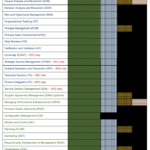









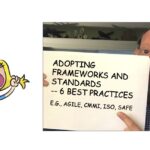
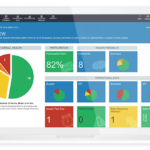









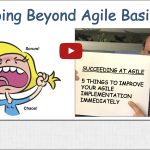




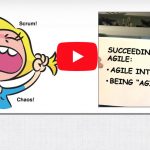
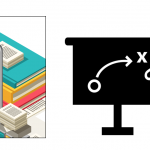

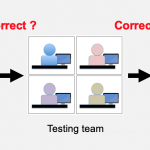
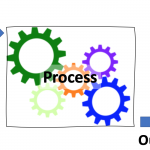








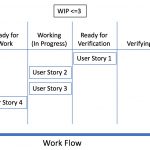

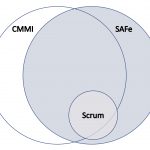





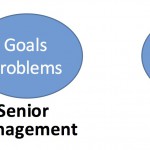



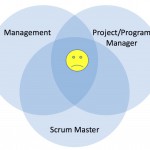
















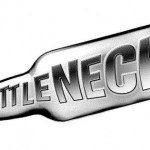
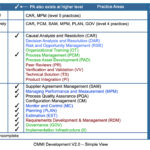
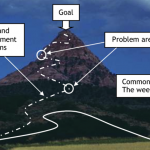

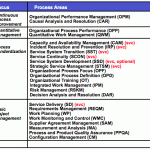
 The Process Group helps you improve your organization's capability to routinely meet deadlines and delivery quality expectations. We are certified CMMI appraisers / trainers and Certified Scrum Masters.
The Process Group helps you improve your organization's capability to routinely meet deadlines and delivery quality expectations. We are certified CMMI appraisers / trainers and Certified Scrum Masters. 